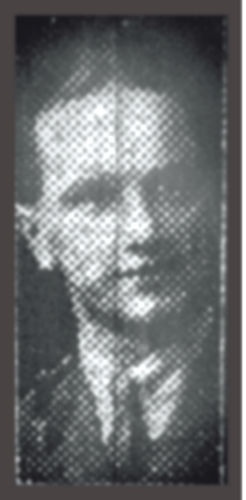Name
Charles Alexander Fletcher (MM)
Conflict
First World War
Date of Death / Age
20/10/1918
23
Rank, Service Number & Service Details
Second Lieutenant
Royal Air Force
No. 1 Fighting School
Awards: Service Medals/Honour Awards
1914 /15 Star, British War and Victory medals
Military Medal
Cemetery/Memorial: Name/Reference/Country
HADLEY GENERAL CEMETERY
W831.
United Kingdom
Headstone Inscription
Not Researched
UK & Other Memorials
Not on the Monken Hadley memorials, Turnberry RAF Memorial
Pre War
Charles is recorded as born in Hadley - presumed Monken Hadley.
Charles Alexander was born to Charles Fletcher and Christina Clark Forbes who married on 19 October 1885 in All Saints church, Hockley, Birmingham. Charles was a carpenter and joiner. They had four sons, the first two born in Hereford, the third in Tewkesbury and the fourth, Charles Alexander, in Aston, Wellington where he was baptised on 8 September 1895. Just one month later, on 19 October, his father died in Tewkesbury, aged just 35.
In 1900 Christina, his mother, remarried in Tewkesbury, to another carpenter and joiner – Hedley Talliss (sic). In 1901, while she had taken his name, her children kept the surname Fletcher, but they were all living together in Oldbury Road, Tewkesbury.
By 1911, Christina and her children had moved to Wellington and were living in Sutherland House, 104 Wrekin Road. Christina was described as a widow and boarding house keeper and Charles as a shop assistant in a tailor and outfitter. This was the outlet run by Walter Davies in the Market Square, Wellington where Charles worked from 2 June 1910 until 6 September 1914. Meanwhile Hedley Tallis remained in Tewkesbury, living in his father’s house and described as married.
Wartime Service
On 8 September 1914, Charles enlisted at Shrewsbury into the King’s Shropshire Light Infantry. His medical report stated that he was 5’ 4½” tall, with brown complexion, brown eyes, and black hair. He stated that he was a Congregationalist. Private C A Fletcher 12891 was posted to the 6th Battalion B Company which left the depot on 10 September for Blackdown and then Cowshot. Equipment and rifles were in short supply but by spring 1915 this improved and after intensive training at Larkhill, Salisbury Plain the battalion became a unit of 60th Brigade.
The battalion entrained at Amesbury for Folkestone on 21 July and crossed to Boulogne the following day, enduring very rough seas and drenching rain. By August, Charles had impressed his commanders and was promoted to acting corporal.
The battalion’s first serious engagement was in the Battle of Loos commencing 25 September in which it lost four offi cers and 59 men.
On 30 January 1916, Charles was promoted to sergeant. His role as signalling sergeant meant he had responsibilities for keeping the components of the battalion in continual communication with each other – the headquarters, companies, transport and support elements all had to be able to communicate with each other to be and remain an efficient unit. From January to September the battalion was involved in a number of actions which resulted in more casualties. After the Battle of Guillemont in early September, the battalion went to the rear for a short period of rest and on 25 September he was, together with eight other NCOs and men, presented with a certificate for gallantry by the Brigadier-General. In October the division was out of the line, training and absorbing reinforcing drafts of men. By 4 January 1917, the unit was at Saillisel suffering very cold weather of 20 degrees of frost and heavy snow.
On 16 January, Charles was ordered back to England to commence officer training for a commission in the Worcestershire Regiment. Before he returned he was awarded the Military Medal for bravery in the fi eld. The award was notified in the London Gazette of 22 January 1917. Following successful training he was commissioned as a temporary second lieutenant on 26 June.
His medal index card confirms that he was posted to the 1/8th Battalion which was sent to the Italian front in November 1917.
In July 1918, Charles was accepted for pilot training and returned to England. No doubt he sought a couple of days’ leave to visit his mother, living at 10 Crescent Road in Hadley. He reported to the Royal Air Force on 11 July and was sent to the School of Aviation on 7 August. On 24 August he was sent to RAF Eastchurch in Kent followed by a move on 5 October to Turnberry, Ayr in Scotland where No.1 Fighting School was located.
On 20 October he climbed aboard a DH.9 plane as observer with Lt J S Brown at the controls. At 2.40pm the plane stalled in a climbing turn and fell into the sea. Both occupants were killed. The Court of Inquiry found that ‘The cause of the accident was in our opinion an error of judgment on the part of the Pilot Lt J S Brown.’
Charles’ body was brought back to Shropshire where he was buried in Hadley Cemetery. His mother, Christina inherited his estate of £158/7/4. In 1921, she applied for his medals, the 1914–15 Star, British War Medal and Victory Medal to put with his Military Medal.
Additional Information
See https://www.shropshirearchives.org.uk/wp-content/uploads/2018/10/wellington-remembers_Fletcher-Charles-Alexander.pdf Christina, by then living at 10 Crescent Road, Hadley also paid for the inscription on Charles’ headstone, ‘Thy will be done’. Christina died in 1937 in Wellington. Her second husband, Hedley Talliss (sic), was living in Norton Lindsey, Warwickshire in 1939, with his sister, Beatrice Maud. Charles’ brother, John Alexander, was working as an Army Records and Pay Clerk in 1939, married and living at 1 Haybridge Road, Hadley. Notes: Lieutenant James Stanley Brown was attached to the RAF from 5th Battalion East Lancashire Regiment. The DH.9 bomber suffered from an early unreliable engine which failed to provide the expected power. This gave the plane a poorer performance than the aircraft it was meant to replace. It incurred very heavy losses on the Western Front.
Acknowledgments
Jonty Wild, Wellington Remembers, Shropshire Archives



